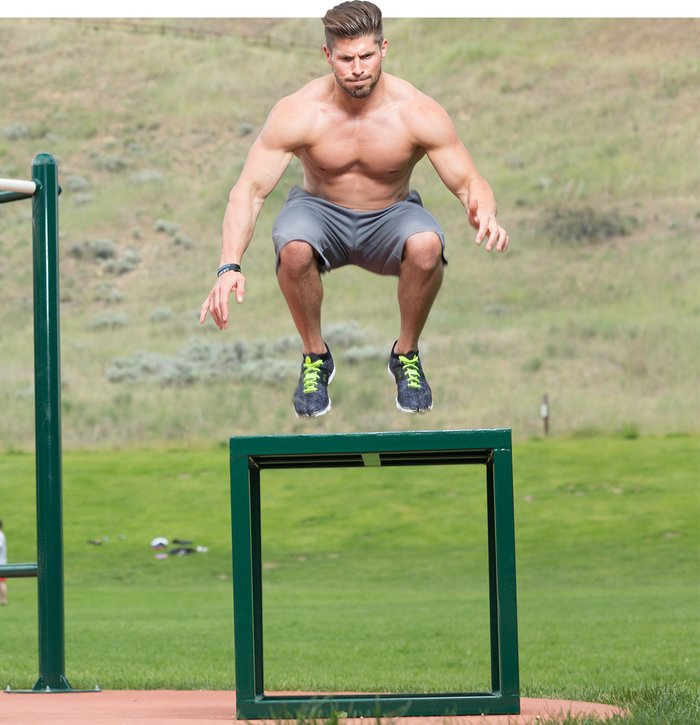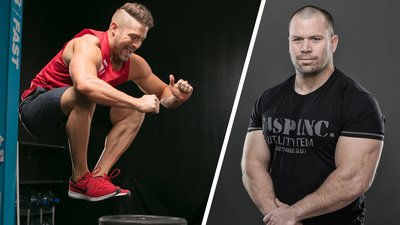Question: I'm looking for ways to add more power and explosiveness to my powerlifting performance. Someone told me that plyometric jumping is a great way to do it. What do you think?
The knuckle-dragging traditionalists will say "no," and argue that powerlifting is a test of limit strength, not time. But, assuming you're healthy and meet the prerequisite requirements, I think jump training will benefit you big-time!
Think about it: the faster you can move the barbell in the powerlifts, the less likely you are to encounter a sticking point. Try walking over to a dumbbell rack and slowly lifting a 25-pound dumbbell. Set it down. Now, quickly snatch it off the rack. I'll bet dollars to doughnuts that when you grabbed the dumbbell quickly, it felt lighter. A barbell is no different. Simply having the intention to move it from point A to point B quickly will make it feel lighter.
How quickly you develop force is called your rate of force development (RFD). Jump training is one of the best ways to improve RFD and, unlike Olympic lifts, it has a simple learning curve. After all, it's impossible to jump high slowly. When jumping, you must develop large amounts of force in a short span of time. This will have a direct impact on your squat and deadlift.
Don't begin jump training until you meet the requirements listed below. If you do not, you will have a higher risk of injury and jump training may set your progress back.
- Have a body fat percentage below 20
- Have injury-free hips, knees, and lower back
- Have the ability to squat 1.5 times your bodyweight and deadlift 1.75 times your bodyweight (both lifts raw)
- Be under the age of 40
The Jumps: Nothing Fancy, Folks
Basic jumps are not only the safest, they also have the most direct transference to powerlifting. These three are all you'll ever need:
1. Box Jump
Stand in front of a box that is approximately the height of your current vertical jump. Rapidly raise your arms above your head, then swing them down by your sides as you bend your knees into a 1/4 to 1/2 squat position. Quickly swing your arms back up, straighten your legs and explode into the air, landing on the box. Jump as high as you can.

2. Box Squat Jump
Place a box or bench behind you. Sit on the box, briefly pause, and—using your arms or not—explode off the bench into the air. When you land, sit down briefly on the bench, then repeat the movement.
3. Depth Jump
Depth jumps follow along the lines of original plyometrics; they are very high-impact and are therefore sometimes referred to as the "shock method." I would not recommend doing these more than a month in a row and especially not if you are overweight or have knee problems. Make sure you can squat at least double your body weight before attempting these jumps.
Stand on top of a 12-to 18-inch box, then step off the box. The instant your second foot hits the ground, jump as high as you can. Keep your feet on the floor for as short a time as possible.
Follow These Training Guidelines
Here are some guidelines for adding jump training to your program:
- Only do jump training after you've properly warmed up.
- Don't include jumps in your training for more than eight to 10 weeks.
- Cycle jump exercises into your regular training program.
- Don't do depth jumps for more than one month.
- Jump one to two days per week.
- Don't do more than 40 jumps in one workout. Aim for 10-15 reps total.
- Do jumps before squats and deadlifts or between sets.

